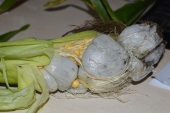Hugo Morvan wrote:Slightly off topic. I care to disagree Megan. Nitrogen is taken away in the form of produce in ever increasing quantities into ever growing cities. Where the sewer system takes it all in. Civilized rich countries are composting it in giant plants. It's very rich in nitrogen, tomatoes are abundant, but it's full of chemical toxins and medicines and recreational drug components. In theory it could be taken out. It's just too expensive.
Thanks Hugo,
I actually don't think we disagree at all, I work with coming up with solutions to toxins for a living and the ethical questions around these issues keep me up at night. I of course don't think that suggesting the world return to subsistence farming is going to work, and while idealism has many solutions, transition is the only path worth our time at the moment. The disscusion on Humanure was about the closed loop system as far as nutrients and I was saying that subsistence closes the loop, again not practical but a necessary element to a nutrient cycle discussion.
As far as the toxins in compost and human waste goes these are tough things to make ethical calls on, for importing toxins is never a fun idea and exporting them does not solve the problem, in fact exporting toxins has made a HUGE problem in the global south. When it comes to heavy metals, is dilution the solution to pollution? I digress this is a subject for different thread...
I am so glad permies is discussing this issue, nutrient cycles on a global scale is hard to wrap our heads around but critical for addressing the issues of agriculture and creating transition. Composting on a municipal level is great and for every one to do this and bring it back to farms contains a carbon footprint as welll... The more localized it all is the better...








